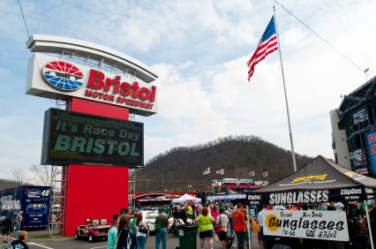NASCAR safety innovations: What auto manufacturers can learn from racing
Emmet Pierce
Stock car racing had modest beginnings, with dirt-track contests for souped-up street cars. But now it has evolved into a research lab for improving safety for high-performance racers and mass-produced vehicles.
The extreme driving conditions of high-speed racing can provide valuable information about keeping everyday drivers and their passengers safe, even when our vehicles sustain major damage, says Diandra Leslie-Pelecky, a West Virginia University physics professor and the author of “The Physics of NASCAR: The Science Behind the Speed.”
Each time a crash happens, more information becomes available to help understand the causes, Leslie-Pelecky says. “How else are you going to get the data at these extreme speeds and energies, except on a racetrack?” she says. “We still are constantly learning.”
Safety innovations can help reduce the cost of car insurance, since insurers base their premiums on the risk of paying claims for injuries and vehicle damage. John Solow, a professor of economics at the University of Iowa, took part in a study that looked at National Association for Stock Car Auto Racing (NASCAR) events between 2001 and 2009.
 Solow found that the excitement of crashes is part of the appeal for fans. He also noticed that many drivers manage to live through horrific wrecks because of restraint systems and the remarkably strong construction of their custom cars.
Solow found that the excitement of crashes is part of the appeal for fans. He also noticed that many drivers manage to live through horrific wrecks because of restraint systems and the remarkably strong construction of their custom cars.
People who see races in person or on TV observe “cars that go airborne and roll over, and people walk away,” he says.
Keeping drivers safe
NASCAR vehicles are equipped with sophisticated seat belt systems, roll cages, window nets and head-and-neck restraint systems.
One area where NASCAR has contributed to auto manufacturers’ understanding of driver safety is in the use of restraints, Leslie-Pelecky says. Race drivers reported that seat belts work best if there’s some flexibility in the fabric, which eases the shock of a sudden stop.
Manufacturers responded by developing seat belts “that slow you down rather stopping you suddenly,” Leslie-Pelecky says. “A lot of these things came from motor sports.”
Randy LaJoie, a former NASCAR driver who builds seats for NASCAR racers, says today’s child-restraint car seats are based on the principles of driver containment that were pioneered by stock car drivers. “NASCAR and auto racing is real-life crash testing, and it happens every weekend,” LaJoie says.
Although innovations are discovered at the track, it can take many years for them to find their way into mass-produced cars, says Byron Bloch, an auto safety consultant in Maryland. Safety features are difficult to transfer because NASCAR vehicles are custom-built, Bloch says. He’s pushing for NASCAR officials and car manufacturers to do more.
“NASCAR should educate the public about the safety inherent in their vehicles,” he says, “and try to stimulate the adoption of safety technology in the vehicles we all drive.”
Trading comfort for safety
Tom Gideon, senior director of safety for research and development at the NASCAR Research and Development Center in North Carolina, says race car drivers are more willing than most drivers to trade comfort for safety. They’re strapped into their cars so tightly that some struggle with claustrophobia. By contrast, passenger cars are made so that restraint systems consisting of seat belts and air bags are hardly noticeable.
An important area where racing has advanced auto safety for all drivers is in the manufacturing of more durable tires, he says. Through trial and error, race drivers have discovered the types of tire materials that work best.
Gideon says everyone can learn a safety lesson from the drivers themselves. The pros pay very close attention to what they’re doing.
“They do not text while driving. They do not talk on a cellphone,” he says. “The race car drivers never look away. They are intent and focused.”
Looking at barriers
Dean Sicking, an engineering professor at the University of Alabama at Birmingham, helped develop the Steel and Foam Energy Reduction (SAFER) barriers that are used on racetrack walls worldwide. He says the energy-absorbing technology that’s now part of NASCAR barriers could make driving safer for everyone.
Although they’re much more expensive than conventional guardrails, such barriers eventually will be common on public roads, Sicking predicts. The barriers “will be used in central downtown areas, where we have high-speed freeways coming through tunnels, and situations that are high-risk,” he says.
